In astrophysics, an illusion that astronomers are familiar with is the gravitational lens or gravitational mirage.
A massive object, a cluster of galaxies, for example, which is between an observer and a distant light source, prints a strong curvature in space-time.
This has the effect of deflecting all light rays passing near the object, thereby distorting the images received by the observer.
This amplification of light, a distant celestial object by a massive star in front, was predicted by the theory of general relativity in 1917.
The massive objects modify the geometry of space and time in their neighborhood.
The light on the other hand always takes the shortest path, but in a curved space modified by the presence of a huge mass, the shortest path is not straight.
The light path is bent in the vicinity of massive stars. Most images of galaxies that are in this photograph are multiple images of a single ring galaxy.
A giant cluster of galaxies located in front acts as a huge gravitational lens.
In the foreground galaxies in this cluster are shown in yellow and behind the observed galaxy appears blue.
A gravitational lens can create multiple images of background galaxies. | | The singular form of the galaxy blue background (small blue spot in the center of the image), allowed to infer that it is the same that we see in 4 hours, 10 hours, 11 hours and 12 hours.
The analysis showed that at least 33 images of 11 different background galaxies are discernible in this image.
This spectacular picture of the galaxy cluster CL0024 1654 was taken by the Hubble Space Telescope in November 2004.
Predicted by general relativity by Albert Einstein, a number of gravitational lensing have been observed by Hubble. Sometimes, when the alignment between two objects is perfect, the image of the distant object can take the form of a ring of light surrounding the subject at hand.
In case of perfect alignment between the observed source (a star for example), and another stellar object (a black hole for example), the black hole in front will act as a gravitational lens or deflector.
The observer will not see the star as such but rather as a ring, this ring is appointed, the Einstein ring.
A star, although a mass much lower than that of a galaxy, can also act as a gravitational lens.
The effect is obviously much less powerful, it is called, micro gravitational lens. | | 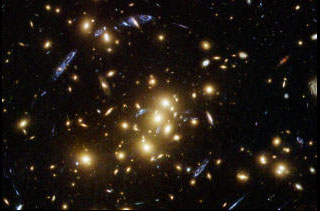 Image: This gravitational lens shows a strange blue objects stretched.
They are spread in a circle in this picture, but are only multiple views of a single ring galaxy.
The singular form of the galaxy blue background (center of the cluster), allowed to infer that the same galaxy as we vote on this image to 4 hours, 10 hours, 11 hours and 12 hours. |
What's going on near the center of the galaxy clusters on the image to the cons?
At first glance, it seems that many are strangely elongated galaxies around the five brightest quasars, in white on the image.
In fact, a cluster of galaxies acts as a gigantic gravitational lens that distorts and multiplies the luminous objects located behind.
The five white points of light near the center of the cluster are in fact images of the same distant quasar. This image of the Hubble Space Telescope is so detailed that even the host galaxy surrounding the quasar is visible. The observation of the picture against shows that galaxies located in 2H and 4H are actually images of the same galaxy. A third image of this galaxy is about 10 am, the center of the cluster. | | Image: The observation of the universe is sometimes misleading because by happy coincidence, we can see many strange and distant galaxies imaginary, they look like colorful jewels, like the picture against.
The group saw the huge galaxy gravitational lens is cataloged SDSS J1004 4112 and is about 7 billion light-years away towards the constellation Leo. | | 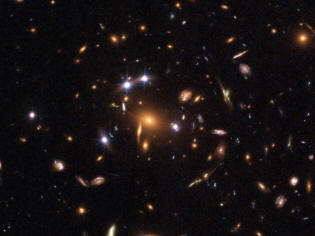 |



 Automatic translation
Automatic translation

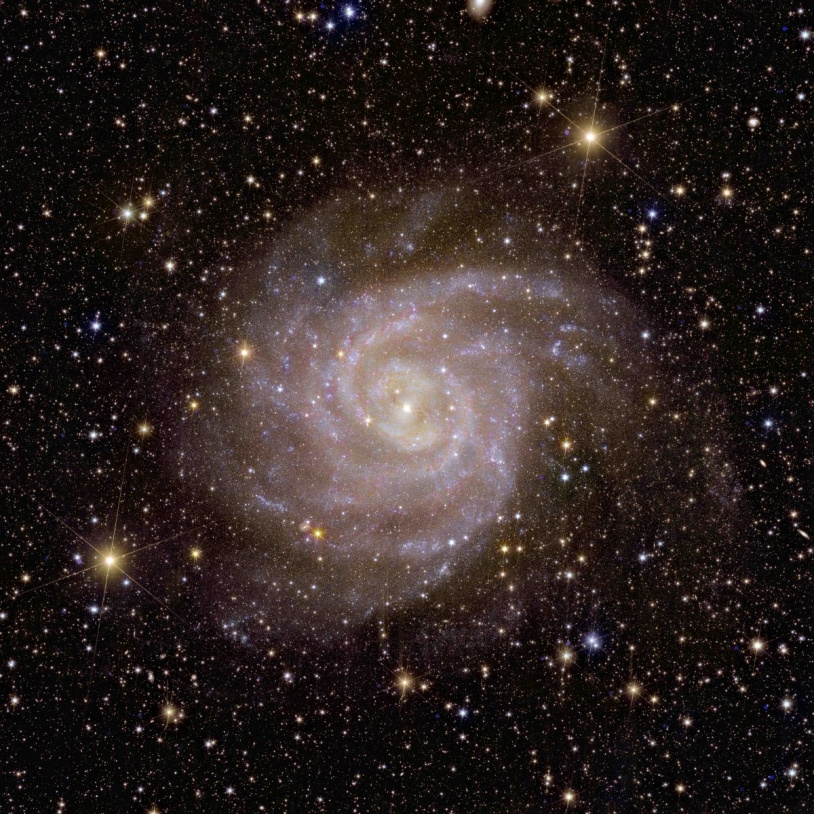 The hidden galaxy, one of Euclid's first images
The hidden galaxy, one of Euclid's first images
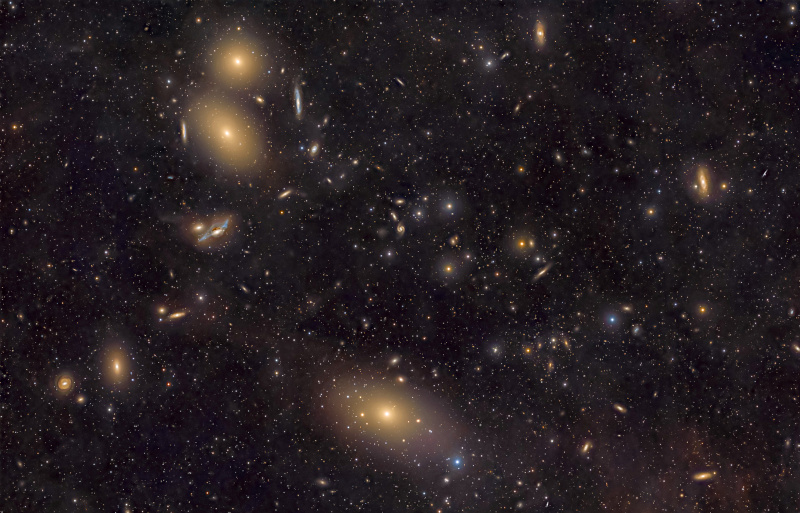 The Virgo Cluster spans approximately three Full Moons
The Virgo Cluster spans approximately three Full Moons
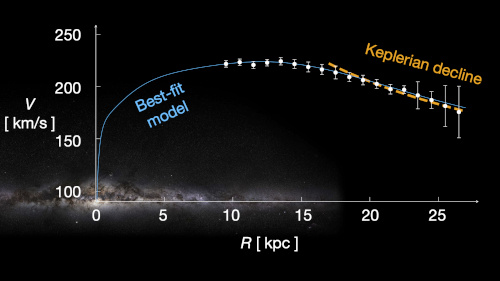 Where did the dark matter in our Galaxy go?
Where did the dark matter in our Galaxy go?
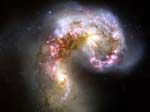 Merging galaxies and black holes
Merging galaxies and black holes
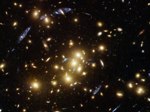 Mirages created by gravitational lenses
Mirages created by gravitational lenses
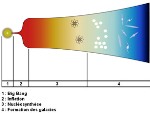 Mystery of the Big Bang, the problem of the horizon
Mystery of the Big Bang, the problem of the horizon
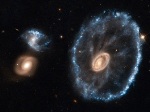 Cartwheel Galaxy Cosmic Event
Cartwheel Galaxy Cosmic Event
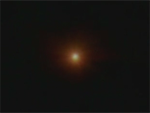 The first second of our history
The first second of our history
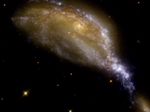 A small galaxy tears apart the large NGC 6745
A small galaxy tears apart the large NGC 6745
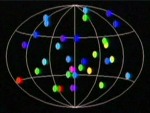 The mystery of gamma bursts
The mystery of gamma bursts
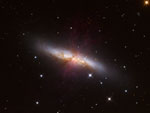 The Cigar Explosion
The Cigar Explosion
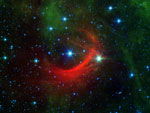 Shockwaves
Shockwaves
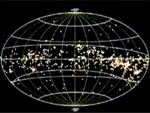 Gould's belt, a stellar fireworks display
Gould's belt, a stellar fireworks display
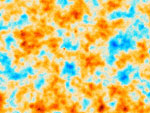 Recombination in cosmology
Recombination in cosmology
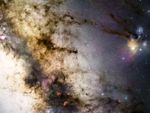 Journey to the center of our galaxy
Journey to the center of our galaxy
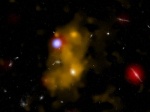 Lyman-alpha bubbles
Lyman-alpha bubbles
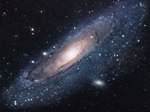 Andromeda in the ultraviolet
Andromeda in the ultraviolet
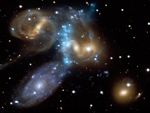 The most beautiful galaxy clusters
The most beautiful galaxy clusters
 Tinkerbell merger of three galaxies
Tinkerbell merger of three galaxies
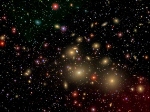 A gigantic black hole
A gigantic black hole
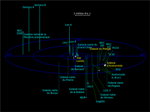 Enigma of coplanar galaxies
Enigma of coplanar galaxies
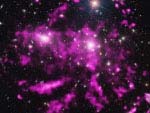 The cluster of galaxies Coma in its soup
The cluster of galaxies Coma in its soup
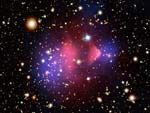 The cannonball, proof of dark matter
The cannonball, proof of dark matter
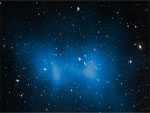 El Gordo galaxy cluster
El Gordo galaxy cluster
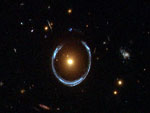 Einstein ring and cross
Einstein ring and cross
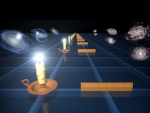 How to measure distances in the Universe?
How to measure distances in the Universe?
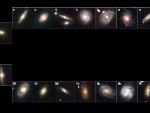 The Hubble sequence and types of galaxies
The Hubble sequence and types of galaxies
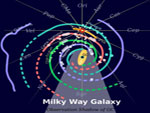 The spiral shape of the galactic arms
The spiral shape of the galactic arms
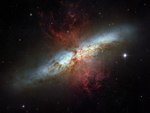 Even more stars, the Cigar galaxy
Even more stars, the Cigar galaxy
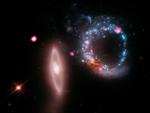 The Universe of X-rays
The Universe of X-rays
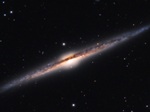 The most beautiful galaxies
The most beautiful galaxies
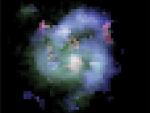 The oldest galaxies in the universe
The oldest galaxies in the universe
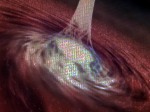 Quasars the nuclei of galaxies
Quasars the nuclei of galaxies
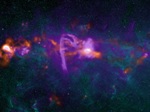 Sagittarius A black hole at the center of our Galaxy
Sagittarius A black hole at the center of our Galaxy
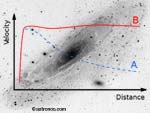 The MOND theory and its contradiction
The MOND theory and its contradiction
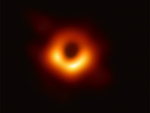 The first image of a black hole
The first image of a black hole
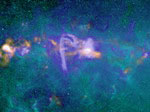 Central area of the Milky Way
Central area of the Milky Way
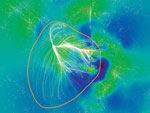 Laniakea, our supercluster of galaxies
Laniakea, our supercluster of galaxies